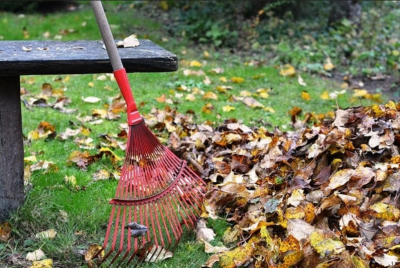Pollinators Tucked In Leaves for the Winter!
Did you know that many pollinators hibernate in leaf litter and the hollow stems of dormant plants for the winter?
While many of us are growing more sensitive to the plight of the pollinators, mindfully incorporating pollinator-friendly plants into our gardens in the spring and resisting the urge to use pesticides in our garden all summer, we are unwittingly undoing our hard work and good intentions when we clear away the leaf litter and standing dead plant material in the fall!
What? You mean I am killing off the very pollinators that I “cultivated” all summer? Yep. Ouch!
The survival of queen bees, moths, butterflies, snails, spiders and many arthropods depend on nature’s dormant ecosystem during the winter months. When we rake, mow, and blow away the leaf cover we are interrupting the lifecycle of these critters, as well as that of birds and other animals that rely on them for sustenance.
If you are interested in promoting and sustaining the lifecycles of pollinators, resist the urge to tidy up your dormant bee/butterfly habitat! Leave the tangled masses of dead plant stems standing all winter, and leave the leaf litter in the garden bed. Comfort your somewhat uneasy self with the knowledge that bees are nesting in those hollowed out dormant plant stems, and butterfly larvae were wintering the blanket of leaves.
Should I leave leaves on the lawn? Leaf litter may be the best mulch around, and a few inches of it is good for the planting beds along the perimeter of the lawn, but too much leaf buildup will damage your lawn; so if you must clear, please use a rake instead of a blower, and transfer the leaves to a planting bed or compost pile instead of bagging them and taking them to the curb. If you pick them up with a mower and mulch them up you will be eradicating the critters hibernating there!
Your Neighbors may Think You’re Crazy, or just Plain Lazy!
As a society of suburban dwellers, we are conditioned to want the autumn landscape to be cleaned up! And we cringe at the thought of our neighbors judging us and assuming we’re lazy and inconsiderate (you know we expect each other to keep our yards in the suburban style!)…
But as we begin to understand the ramifications of our actions on the pollinators and their friends that depend on leaf cover to carry on their lifecycle through the winter, we must re-evaluate our methods!

Perhaps you’ll feel less constrained by neighborhood “pressure” if your neighbors are aware of your deliberate action to promote a healthy pollinator habitit. Click this link to receive this sign as a gift for making a donation to the Xerces Society:
https://gifts.xerces.org/products/pollinator-habitat-sign

Next Question. When is it safe to remove the leaves from the lawn and hardscapes? The answer varies, depending on the climate where you reside, but in Alabama it is apparently best to wait till May! I know it will be hard to resist the temptation to clear the garden, cut down the stalks and begin planting at the first sign of spring, but wait! Here is a guide to timing the wait/cleanup:
https://xerces.org/blog/dont-spring-into-garden-cleanup-too-soon
Will the City Change its Practices?
The City of Mountain Brook’s Departments of Planning, Building, & Sustainability, and Parks & Recreation are working together to better understand ways in which the city’s maintenance of public spaces can better align with sustainable practices as they relate to pollinator habitats. Let’s all put better methods in practice, together!
Bottom line. Don’t carry all those butterflies and bees to the curb after you’ve worked so hard to attract them and sustain them!
To learn more about the importance of leaving the leaves go to:
https://xerces.org/blog/leave-the-leaves
For more information on pollinators go to:



